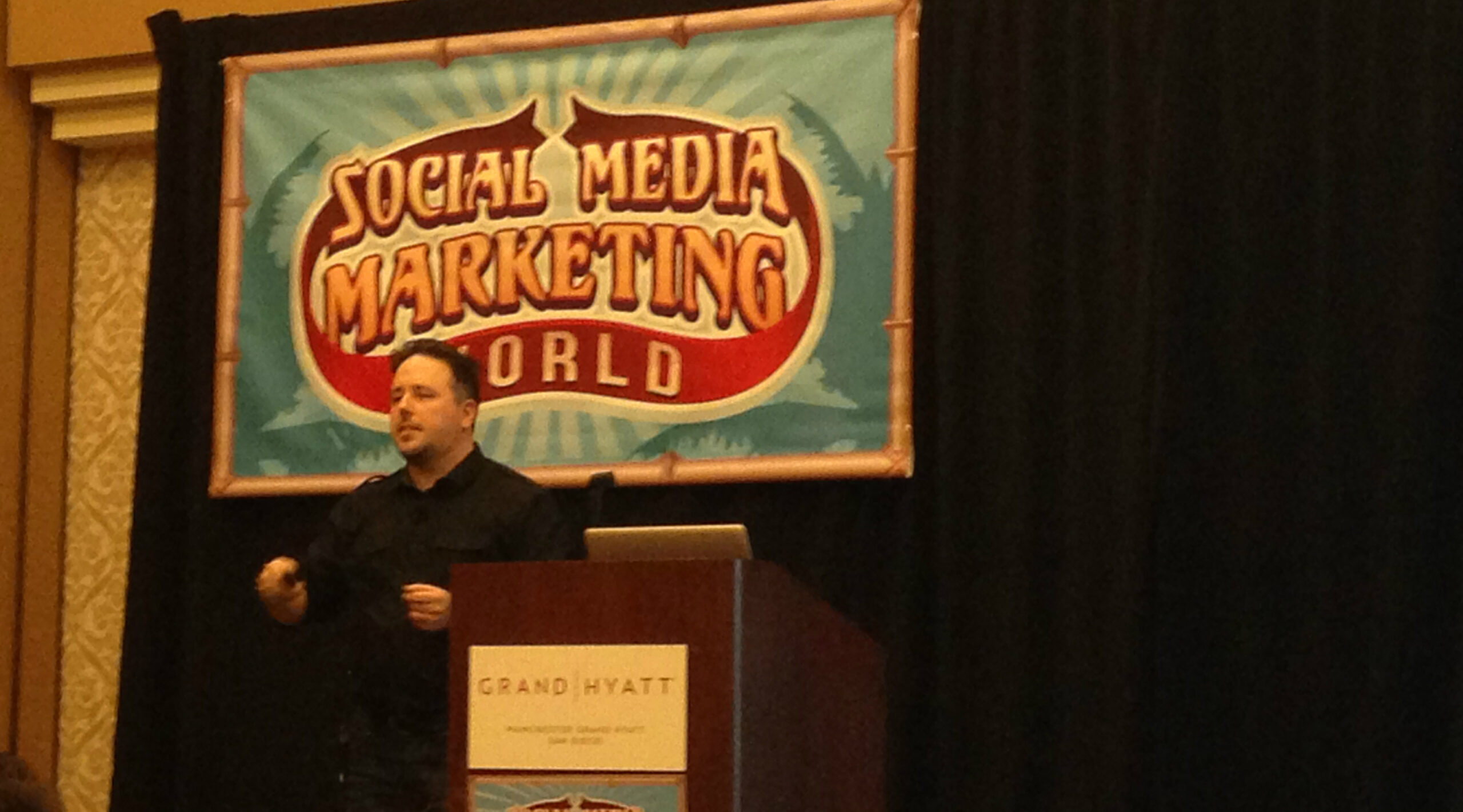
Once called the “ugly duckling of social media”, rising stock prices, an active community, a lucrative advertising platform and a heavy focus on content have made LinkedIn into one of the most attractive platforms for b2b marketers today. (Disclosure: LinkedIn is a TopRank Content Marketing client)
In a fast paced, entertaining and metal-infused presentation (the Kiss army appeared on several slides), Jason Miller of LinkedIn Marketing Solutions showed off the compelling opportunities which LinkedIn offers to marketers and businesses at Social Media Marketing World 2014.
If you haven’t taken advantage of the awesome marketing power of LinkedIn for your business, there has never been a better time to start. Here’s how:
1. Establish an Optimized Presence
It all starts with your brand page. Given the huge adoption of LinkedIn within the business community, there’s a good chance people are already researching your company on LinkedIn, so it’s important to make sure that your page makes a good impression.
Some key areas of your business page are:
- Images
- Profile copy
- Products / Services
Similar to your website, you should be including your target keywords throughout your copy to make sure it’s visible for relevant concepts. You should also be linking to your other social channels and company site to drive referral traffic.
For inspiration, check out the great company pages maintained by Capital One, Marketo, or Secret Deodorant.
2. Attract a Following
The key to growing your following on LinkedIn is to provide value to the community. Regularly posting interesting and useful content is a great way to do this, but you should also be interacting with others content. Don’t treat LinkedIn simply as a broadcast media channel by only talking about yourself.
Another excellent opportunity to grow your audience is to create one or more LinkedIn groups. Many brands such as Hubspot have grown very active LinkedIn groups which are paying huge dividends in terms of brand exposure, market research, and the opportunity to engage with their target audience in a very natural and helpful way.
However, before starting a LinkedIn group, it’s important to consider:
- Resources: growing and maintaining an effective LinkedIn group requires dedicated community management to ensure the conversation stays relevant, avoids painting the brand in a bad way and doesn’t turn into a ghost town.
- Message: with some exceptions, the most successful brand owned LinkedIn groups are those that avoid being overly sales focused. Answering questions, providing insights, and engaging in conversations are what LinkedIn members join groups for, not hearing sales pitches. Members who find your group useful, fun and engaging will find their way to your brand page or website on their own when the time is right.
3. Empower Advocates
In traditional media, brand content is broadcast to an audience. In social media, content is broadcast to an audience who also has an audience. By engaging with the right people in social, brands are able to achieve much greater reach through exposure to audiences outside their immediate circles. This kind of marketing is hard to put a price on.
The key is finding advocates who not only know and love your brand, but who will amplify your content to their circles on their own volition. The best place for any business to start looking for brand advocates is under their own roof. Happy employees can be your best brand advocates.
In order to see the benefits of social advocacy, brands need to empower their advocates to freely spread the message, which means being comfortable giving up some control, but the potential gain in audience size and sentiment makes it well worth the compromise.

4. Amplify Through Paid Promotion
For brands looking to achieve more amplification to their presence or generate leads, LinkedIn advertising is worth looking into.
The keys to effective LinkedIn advertising are:
- Targeting: LinkedIn advertising provides a multitude of flexible targeting options, from very broad to uber-specific, including by region, industry, title, company or group.
- Compelling offer: always keep your audience at the forefront of your mind when planning out your Linkedin advertising offers. Meatier content like whitepapers or Ebooks tend to do well with the LinkedIn community.
- Testing: you should always be testing variations of your ad copy, imagery, fulfilment, targeting options and bids. Minor tweaks can make a big difference in impressions, clicks and conversions, and regularly testing variations will help you get the most value from your ad spend.
5. Analyze and Refine
LinkedIn has powerful analytics capabilities built into the platform, including their recently launched Content Marketing Score and Trending Content reports, which together help to quantify the impact of your content across areas of LinkedIn (groups, influencer posts, sponsored updates, etc), rank you against competitors and show which topics are resonating with specific audiences.
Those are all extremely valuable insights that can help you:
- Optimize your content plan for maximum relevance to your audience
- Identify areas of LinkedIn which you should be spending more effort
- Benchmark your performance and find areas for improvement
- Measure and optimize your competitive advantage
In the ultra-competitive world of digital marketing, if you’re not consistently improving, you are falling behind, so make sure to always be monitoring your performance and finding opportunities to optimize.
Brands such as Adobe, HubSpot and Social Media Examiner are investing in their presence on LinkedIn and are seeing huge returns, and all businesses should be taking notice.
How are you utilizing LinkedIn in your digital marketing strategy?
You can connect with TopRank Online Marketing on LinkedIn here.


